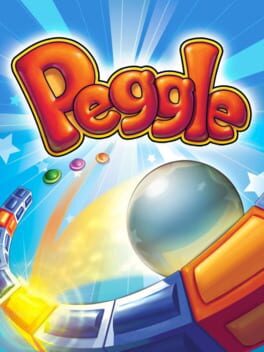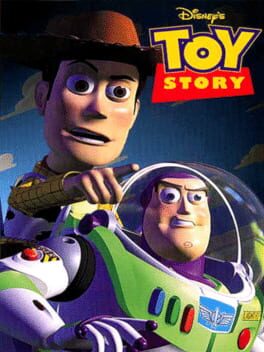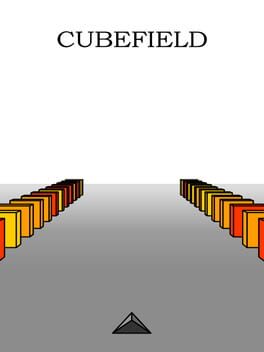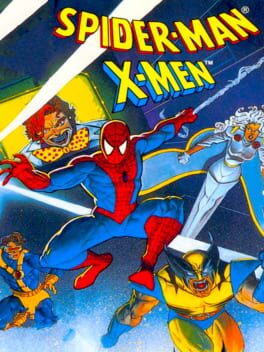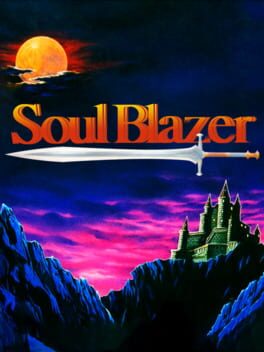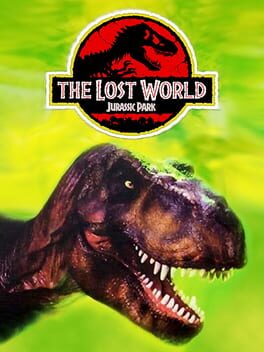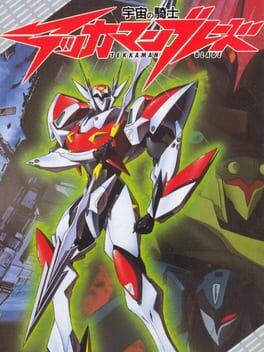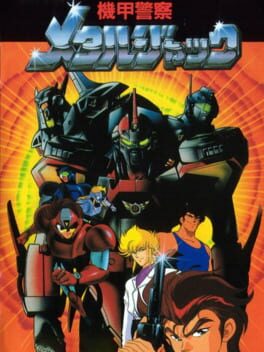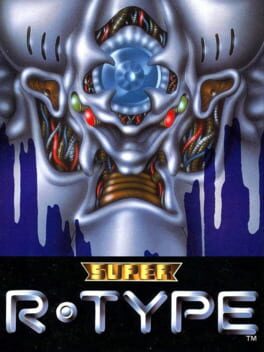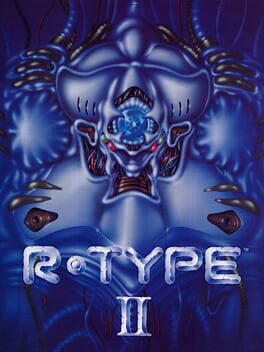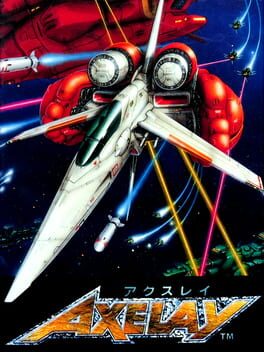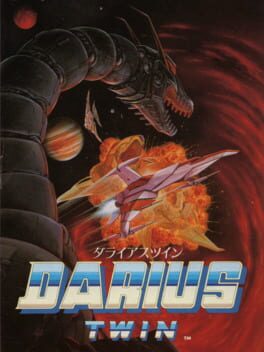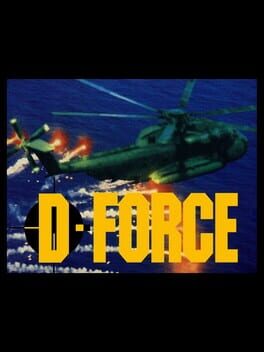2007
Was jokingly told to play this and didn't actually expect to go all the way through but here we are. It's kind of bad and sauceless in the visual department, but surprisingly addicting and a thoroughly solid time.
We were also having a pretty big laugh about the similarities between this track and a seemingly unrelated song by A Tribe Called Quest. Incredible how those two line up.
We were also having a pretty big laugh about the similarities between this track and a seemingly unrelated song by A Tribe Called Quest. Incredible how those two line up.
2002
I finally did muster through Super Mario Sunshine after about three and a half years of leaving it on the backburner, and I must say I still don't get it. It's not all bad but it's like, not very fun to me at all. I found its best moments to be pretty decent, and put up against Super Mario 64 and Super Mario Galaxy I don't really think it stands a chance in most if not all fields. I did not gel with the aesthetic, controls, or level design nearly as much as in either of them.
The biggest thing that irks me about Sunshine, though, is it doesn't feel as open as it lets on. You can beat the game with a minimum of 50 shines (I completed it with 53), but rather than a basic threshold to close off the final level, like how you can get any 70 stars in 64 to reach the end, you are required to do all the first seven missions of each level. In order, too. You can't go out of order like you can in 64, you have to do mission 1, then mission 2, etc. This works fine in Galaxy because the level design reflects it better, it's already more linear to begin with in its design and progression. Sunshine's level design does not reflect its linearity, it presents itself as a lot more open and implies a lot more freedom than you're actually provided. The end result takes away the feeling of free exploration, and it begins to feel more like crossing off a checklist than finding things yourself and reaping the rewards for doing so. Some of these required missions are frankly quite awful as well. A few of the bosses (Petey Piranha 2, Manta) are super tedious and slow, and some other missions littered around are bordering on unacceptable. I could not locate any enjoyment to be found in the "chuckster" mission, for example, and there's just no way to get around it without enduring it. If you have a star in 64 you really hate, chances are you can just work around it, but such is not the case this time.
I figure you can warm up to this with enough playthroughs, but the first is deeply unsatisfying and unrewarding. A competently made and designed game for the most part, but mundane and unenjoyable especially in comparison to the high points surrounding it in the series. Why would I want to play it some more in order to warm up to it if the first playthrough was so consistently rough? I dunno, man. It just doesn't really make sense to me. I really see now why this seems to be the most divisive of the 3D Mario entries, and try as I might to enjoy myself during its runtime, I can't seem to do so often enough to really call it something I like as an overall experience. I'm just glad I at least have it off my back now.
The biggest thing that irks me about Sunshine, though, is it doesn't feel as open as it lets on. You can beat the game with a minimum of 50 shines (I completed it with 53), but rather than a basic threshold to close off the final level, like how you can get any 70 stars in 64 to reach the end, you are required to do all the first seven missions of each level. In order, too. You can't go out of order like you can in 64, you have to do mission 1, then mission 2, etc. This works fine in Galaxy because the level design reflects it better, it's already more linear to begin with in its design and progression. Sunshine's level design does not reflect its linearity, it presents itself as a lot more open and implies a lot more freedom than you're actually provided. The end result takes away the feeling of free exploration, and it begins to feel more like crossing off a checklist than finding things yourself and reaping the rewards for doing so. Some of these required missions are frankly quite awful as well. A few of the bosses (Petey Piranha 2, Manta) are super tedious and slow, and some other missions littered around are bordering on unacceptable. I could not locate any enjoyment to be found in the "chuckster" mission, for example, and there's just no way to get around it without enduring it. If you have a star in 64 you really hate, chances are you can just work around it, but such is not the case this time.
I figure you can warm up to this with enough playthroughs, but the first is deeply unsatisfying and unrewarding. A competently made and designed game for the most part, but mundane and unenjoyable especially in comparison to the high points surrounding it in the series. Why would I want to play it some more in order to warm up to it if the first playthrough was so consistently rough? I dunno, man. It just doesn't really make sense to me. I really see now why this seems to be the most divisive of the 3D Mario entries, and try as I might to enjoy myself during its runtime, I can't seem to do so often enough to really call it something I like as an overall experience. I'm just glad I at least have it off my back now.
1995
Kind of bullshit throughout the whole runtime but has lots of very interesting technical feats under its belt. The Pizza Planet level is especially interesting, and the first person level is much smoother than anything else of its ilk on the console. Could definitely stand to be more playable in the grand scheme of things, but it's at least endearing.
2006
A companion piece to Autechre - Garbage in some abstract, unintended sense. I do think about this a lot, but outside of its aesthetic it's honestly not very interesting at all.
1993
Today we have some garbage specimen that was laying around in my playing tab for much too long. Apparently it did well critically and commercially though, which is a bit of a surprise considering somewhat of a lack of playability. Gambit's levels in particular are about on par with and reminiscent of Action 52 on Genesis.
It doesn't look too great, either. Feels like a bunch of random assets mashed together, not only in terms of like cohesion between levels but player sprites as well. Gambit has smoother animation than the others for some reason, while Storm has two completely different looking sets of sprites in two different sections where you play as her. Funnily enough, she's the only playable character who doesn't have a sheet on Spriters Resource, so here are images for reference. This in particular is fucking hysterical to me. How does something like this even happen?
But honestly, aside from the absurd difficulty and the ugliness, there's nothing really to say here. The Follins did the soundtrack, I guess? It didn't really stick out to me in any meaningful way, though, and it gets overshadowed by bad sfx. That's pretty much all there is to this one. Away it goes, into the corner of my subconscious with all the other dogshit video games I've made myself endure. I don't really know what the point of this whole schtick is sometimes. Not that it'll stop, though.
It doesn't look too great, either. Feels like a bunch of random assets mashed together, not only in terms of like cohesion between levels but player sprites as well. Gambit has smoother animation than the others for some reason, while Storm has two completely different looking sets of sprites in two different sections where you play as her. Funnily enough, she's the only playable character who doesn't have a sheet on Spriters Resource, so here are images for reference. This in particular is fucking hysterical to me. How does something like this even happen?
But honestly, aside from the absurd difficulty and the ugliness, there's nothing really to say here. The Follins did the soundtrack, I guess? It didn't really stick out to me in any meaningful way, though, and it gets overshadowed by bad sfx. That's pretty much all there is to this one. Away it goes, into the corner of my subconscious with all the other dogshit video games I've made myself endure. I don't really know what the point of this whole schtick is sometimes. Not that it'll stop, though.
1992
Solid as it may be, Soul Blazer feels like it retreads a lot of ActRaiser's ideas outside of the core gameplay loop - as a follower of the Master, you help populate wastelands by destroying monster lairs. The change from ActRaiser's platformer/sim genre hybrid to a standard top-down action RPG results in more polish but less ambition, and in my opinion, a little less charm. In addition to the reuse of some sound effects and HUD graphics, as well as a similarly structured ending sequence, it ends up feeling like this side story of sorts to ActRaiser.
Don't get it twisted, though. It's certainly the more accessible of the two if that makes sense, and by all means a good game whether or not you're judging it on its own two legs. I'd bet a lot of people actually prefer Soul Blazer, even - but I am not one of those people. It just feels a lot safer in its execution, and as a result has fewer pleasant surprises from my experiences playing both. Perhaps the biggest downgrade is the presentation, in which Soul Blazer just can't seem to keep up with ActRaiser's soundtrack and its gorgeous backgrounds and environments (and especially for its time as well, during the console's infancy.) This seems to be due to a shorter development cycle, with Soul Blazer only in development for 9 months according to friends.
I just think ActRaiser seems to hit a lot of the same notes with more grace. That being said, it certainly sets a high bar, and Soul Blazer is honestly not too far behind. I like both, but I think I would recommend this for something more accessible and ActRaiser for something more memorable. Don't trust anyone who has informed you of a direct sequel to ActRaiser. There is not a sequel to ActRaiser.
Don't get it twisted, though. It's certainly the more accessible of the two if that makes sense, and by all means a good game whether or not you're judging it on its own two legs. I'd bet a lot of people actually prefer Soul Blazer, even - but I am not one of those people. It just feels a lot safer in its execution, and as a result has fewer pleasant surprises from my experiences playing both. Perhaps the biggest downgrade is the presentation, in which Soul Blazer just can't seem to keep up with ActRaiser's soundtrack and its gorgeous backgrounds and environments (and especially for its time as well, during the console's infancy.) This seems to be due to a shorter development cycle, with Soul Blazer only in development for 9 months according to friends.
I just think ActRaiser seems to hit a lot of the same notes with more grace. That being said, it certainly sets a high bar, and Soul Blazer is honestly not too far behind. I like both, but I think I would recommend this for something more accessible and ActRaiser for something more memorable. Don't trust anyone who has informed you of a direct sequel to ActRaiser. There is not a sequel to ActRaiser.
Really bad. Have you ever found "cumbersome" to be a good description of any shmup? You probably haven't. Tekkaman Blade is cumbersome. I'm sure you can make a solid case for melee attacks in this genre, but Tekkaman Blade sure doesn't. The bosses switch to a 1v1 fighting game type deal, and Tekkaman Blade is not a good fighting game either. You will either cheese your opponent or run out of time trying. I don't think this game gets anything right that it tries to do, honestly. Don't bother with it.
1991
While I liked it a little more this time, it's unfortunately still not quite there upon revisiting. Having played R-Type II first this time, this port comparatively feels massively compromised in ways that don't really benefit it. The bosses are worse, the slowdown frequently brings it to a crawl far worse than maybe any other SNES shmups, and even without the slowdown in mind the overall scrolling and pacing is just far more lethargic than the arcade original. I do appreciate the intended difficulty being a bit more sober this time, but it's brought to a similar level purely by technical issues, which is really not good at all. It seems like most of my friends prefer this version of II to the arcade version, but I can't say I agree.
There's also still no checkpoints, by the way. This fact unfortunately hasn't magically changed between my playthroughs. I feel like you can't bring up Super R-Type without bringing that up, it's just such a weird choice to make.
There's also still no checkpoints, by the way. This fact unfortunately hasn't magically changed between my playthroughs. I feel like you can't bring up Super R-Type without bringing that up, it's just such a weird choice to make.
1989
Really incredibly needlessly brutal. R-Type II is born out of that timeframe where arcade operators were getting greedy in regards to the average playtime on shmups, resulting in insane difficulty boosts on Same Same Same and Gradius III and such. I think this game manages to survive in spite of that, though, and while I'd never play it over III or Delta I personally find it a good deal more alluring than its precursor. There's lots of seeds planted here that would blossom beautifully in the next few installments.
I'm not particularly sure if Super R-Type, the kinda-sorta port over to SNES, is an improvement or not. I remember kind of hating it, but I'll have to take another look since I played it a year and a half ago.
I'm not particularly sure if Super R-Type, the kinda-sorta port over to SNES, is an improvement or not. I remember kind of hating it, but I'll have to take another look since I played it a year and a half ago.
1992
The most notable thing about Axelay in my opinion is how "proto-Treasure" it is, as in the company behind beloved games such as Gunstar Heroes, Alien Soldier, and Ikaruga. It's already known that much of the team behind this game would immediately clean house at Konami and move over to Treasure after completing its development, but even without this knowledge it's hard to shake the feel of Treasure's design philosophy off of Axelay. It's in the incredible art direction, the rocky surfaces in stage 3 and their cybernetic underbellies, the jittery stop-motion movement of the stage 2 boss, all the insane technical feats on display, and so on and so forth. It really sits right at home with Treasure's next few years of work down the line, and in my head I sometimes consider it an honorary member of the Treasure catalog. I might actually prefer it over Radiant Silvergun, their next shmup to be released.
Not quite my favorite shmup on the SNES, but it's very close, only being beaten out so far by R-Type III and maybe Space Megaforce. It's worth a look for any fans of the genre and any fans of Treasure's output. It's ruthlessly difficult though, perhaps even moreso than R-Type III, so it'd be best to stay on your toes if you give it a shot.
Not quite my favorite shmup on the SNES, but it's very close, only being beaten out so far by R-Type III and maybe Space Megaforce. It's worth a look for any fans of the genre and any fans of Treasure's output. It's ruthlessly difficult though, perhaps even moreso than R-Type III, so it'd be best to stay on your toes if you give it a shot.
1991
Meant to replay Axelay tonight alongside D-Force, but l slept a lot and then started thinking about this game instead, which also needed a replay. Competing with the other 1991 shmups on SNES, it just might win. Gradius III is the only other one coming close from what I remember (though I guess technically that SNES port is a 1990 game, but it was still competing in the launch window in all regions whenever said time arrived).
This was kind of a weird introduction to the Darius series for me years ago, but a welcome one nonetheless. It's not on par with Darius Gaiden nor the Genesis port of Darius II, but it still plays very nicely and is even a bit more generous, notably allowing you to keep all your powerups upon dying. This would allow for an easier 1cc in theory, but the game is still quite tough towards the end so I wouldn't hold my breath.
I've really grown to appreciate how pretty this game looks as well. Darius in general has a very unique aesthetic compared to its contemporaries in the shmup genre, and Twin is perhaps the first to lean this far into it. I especially love the ocean backgrounds in levels A and H. On the other hand, though, it does make me wish the alternate routes were more varied. Twin dials back the different paths a bit in comparison to Darius II, only featuring one final level for example. I can't say for sure, but limitations at the time would be my guess. In the console's debut everyone was pretty much still finding their footing - Final Fight's port is heavily compromised, Gradius III is plagued by slowdown, and D-Force is shrouded in pure ineptitude and awful performance even on an 8 megabit cartridge.
Whatever the case, even without as many ways to replay it as Darius II or Gaiden, Darius Twin is thoroughly solid and seemingly very impressive for the console's infancy. I don't think I noticed any slowdown while playing, the big bad slowdown plaguing the SNES shmup library for decades to come, etc. If it's even there in this game, it's too subtle to really affect gameplay, much unlike peers at the time such as Super R-Type, Gradius III & D-Force. It's nothing too crazy for the Darius series' later standards, but for its release date and circumstances I've learned to appreciate it quite a bit more than I previously had. Certainly a much stronger effort than Darius Force, at a minimum.
This was kind of a weird introduction to the Darius series for me years ago, but a welcome one nonetheless. It's not on par with Darius Gaiden nor the Genesis port of Darius II, but it still plays very nicely and is even a bit more generous, notably allowing you to keep all your powerups upon dying. This would allow for an easier 1cc in theory, but the game is still quite tough towards the end so I wouldn't hold my breath.
I've really grown to appreciate how pretty this game looks as well. Darius in general has a very unique aesthetic compared to its contemporaries in the shmup genre, and Twin is perhaps the first to lean this far into it. I especially love the ocean backgrounds in levels A and H. On the other hand, though, it does make me wish the alternate routes were more varied. Twin dials back the different paths a bit in comparison to Darius II, only featuring one final level for example. I can't say for sure, but limitations at the time would be my guess. In the console's debut everyone was pretty much still finding their footing - Final Fight's port is heavily compromised, Gradius III is plagued by slowdown, and D-Force is shrouded in pure ineptitude and awful performance even on an 8 megabit cartridge.
Whatever the case, even without as many ways to replay it as Darius II or Gaiden, Darius Twin is thoroughly solid and seemingly very impressive for the console's infancy. I don't think I noticed any slowdown while playing, the big bad slowdown plaguing the SNES shmup library for decades to come, etc. If it's even there in this game, it's too subtle to really affect gameplay, much unlike peers at the time such as Super R-Type, Gradius III & D-Force. It's nothing too crazy for the Darius series' later standards, but for its release date and circumstances I've learned to appreciate it quite a bit more than I previously had. Certainly a much stronger effort than Darius Force, at a minimum.
1991
A couple friends and I (hi vis! hi terri!) are in talks of making lists ranking each of the SNES shmup titles, and I thought it'd be funny to replay this one early on because I didn't really remember it. It was funny for a few minutes, but by the end I just felt hollow.
D-Force was released at the tail end of 1991 and is one of many early SNES titles to make great emphasis on Mode 7, being used here to alternate between two planes flying high and low. Sometimes this is optional (with use of the shoulder buttons), sometimes it happens automatically, but it never really proves itself particularly novel or useful. The music is pleasant enough for the first three stages before falling off in the second half, occasionally just turning into worse renditions of more well known songs such as La Marseillaise or the theme from E.T: The Extra-Terrestrial.
That's about it for "positives", really. Take those out of the picture and you have a one-button game that is probably one of the weakest, limpest shmups to be put on store shelves. The graphics and colors are really ugly and everything is horribly pixelated, especially when zooming in as mentioned earlier. Enemy and boss bullets are constantly blending in with your own bullets, and rarely do they make any sense with said enemies' bizarre trajectories and other jittery movements. Some of their bullets (especially in the final stage), if they fire diagonally or vertically, are much faster than their own horizontal bullets, vomiting a nonsensical mess of orange pellets at varying speeds all over the screen. The wildly inconsistent framerate gives off the feeling that the game is constantly threatening to collapse in on itself if more than two or three sprites are on screen. The bosses either just sit in place and do absolutely nothing or hide around in the corners or other places deemed inconvenient by your own terrible hitbox.
What a mess. If you saw a few seconds of this in passing, you'd probably be forgiven for assuming it was a demo or prototype. The only lesson I learned from D-Force was that I wasn't hard enough on it when I first played it in 2022. I'm sure it'll sit quite comfortably at the bottom of the shmup rankings list if I do get around to that.
By the way, check out this ill-advised excerpt from the back of the box:
"You've got the fastest bird to be had, but we're not sure you can handle it. If you're quick enough, you'll command the latest Nuclear Apache Helicopter, D-Force, through 7 bone-crushing levels. You'll roam six countries on you seemingly endless search for a powerful oil-rich Mid-Eastern Dictator. If you fail, we'll all be learning a new language soon! Comprendé?"
Not great, huh? Not quite as bad as Total Carnage about this kind of thing, but not great.
D-Force was released at the tail end of 1991 and is one of many early SNES titles to make great emphasis on Mode 7, being used here to alternate between two planes flying high and low. Sometimes this is optional (with use of the shoulder buttons), sometimes it happens automatically, but it never really proves itself particularly novel or useful. The music is pleasant enough for the first three stages before falling off in the second half, occasionally just turning into worse renditions of more well known songs such as La Marseillaise or the theme from E.T: The Extra-Terrestrial.
That's about it for "positives", really. Take those out of the picture and you have a one-button game that is probably one of the weakest, limpest shmups to be put on store shelves. The graphics and colors are really ugly and everything is horribly pixelated, especially when zooming in as mentioned earlier. Enemy and boss bullets are constantly blending in with your own bullets, and rarely do they make any sense with said enemies' bizarre trajectories and other jittery movements. Some of their bullets (especially in the final stage), if they fire diagonally or vertically, are much faster than their own horizontal bullets, vomiting a nonsensical mess of orange pellets at varying speeds all over the screen. The wildly inconsistent framerate gives off the feeling that the game is constantly threatening to collapse in on itself if more than two or three sprites are on screen. The bosses either just sit in place and do absolutely nothing or hide around in the corners or other places deemed inconvenient by your own terrible hitbox.
What a mess. If you saw a few seconds of this in passing, you'd probably be forgiven for assuming it was a demo or prototype. The only lesson I learned from D-Force was that I wasn't hard enough on it when I first played it in 2022. I'm sure it'll sit quite comfortably at the bottom of the shmup rankings list if I do get around to that.
By the way, check out this ill-advised excerpt from the back of the box:
"You've got the fastest bird to be had, but we're not sure you can handle it. If you're quick enough, you'll command the latest Nuclear Apache Helicopter, D-Force, through 7 bone-crushing levels. You'll roam six countries on you seemingly endless search for a powerful oil-rich Mid-Eastern Dictator. If you fail, we'll all be learning a new language soon! Comprendé?"
Not great, huh? Not quite as bad as Total Carnage about this kind of thing, but not great.
